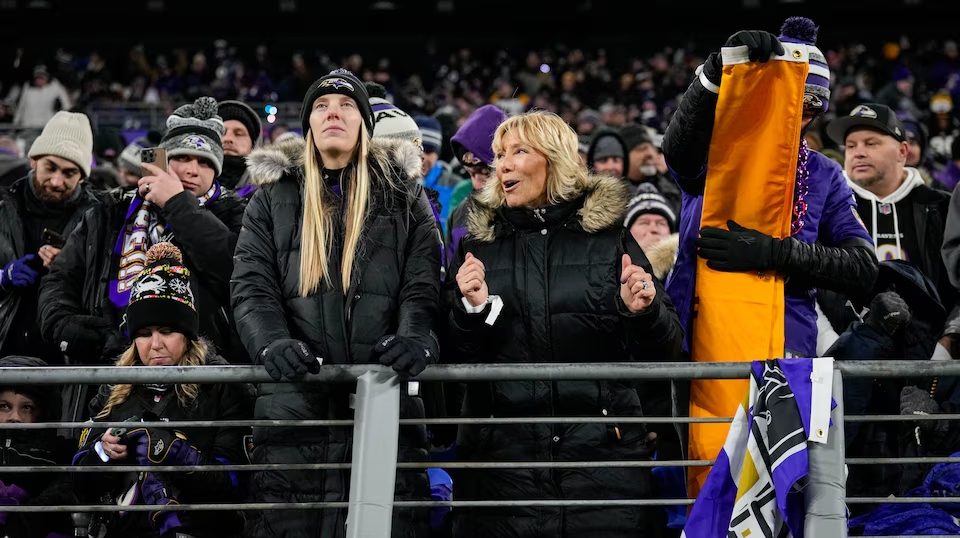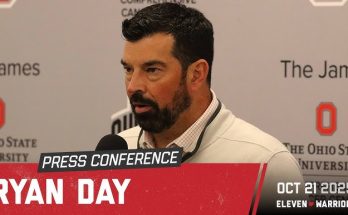For many Baltimore Ravens fans, attending games at M&T Bank Stadium is more than just a way to watch football; it’s an enduring tradition, a personal connection to the team that transcends mere fandom. The seats fans occupy year after year become a part of their identity, where lifelong memories are created during every thrilling touchdown and heartbreaking loss. But for a select group of long-time supporters, that connection was severed recently due to a redevelopment project that has changed the look and feel of the stadium—and left them without their beloved seats.
In a move aimed at upgrading the stadium experience, the Ravens organization embarked on a project to build a new suite level. The suite additions were intended to bring in more revenue, enhance the luxury offerings for corporate partners and high-end fans, and keep M&T Bank Stadium competitive in a rapidly changing NFL landscape. However, the renovations also meant the removal of thousands of seats, including some held by dedicated, lifelong supporters who now find themselves displaced from the spaces they had come to consider their own.
This loss has caused a wave of disappointment, frustration, and regret among fans who had been loyal to the Ravens since the team’s inception in 1996. For many of these displaced fans, the situation represents a painful but unavoidable consequence of the league’s commercialization and the increasing pressure on franchises to prioritize profits over tradition and community.
The History of Fans’ Seats: A Deep Connection
For Ravens fans, their seats at M&T Bank Stadium were more than just physical locations to watch the game. They were places where families gathered to share in the joy of victory and the agony of defeat. Fans could point to their specific rows and seats with pride, knowing they had been part of the stadium’s landscape for years, even decades. These were the same seats where generations of fans had watched the Ravens win Super Bowl XXXV in 2000 and later, Super Bowl XLVII in 2013. They were seats that were synonymous with the highs and lows of Ravens history.
In addition to the game-day experience, the relationships formed around these seats were an integral part of the overall stadium experience. Long-time seatmates developed deep friendships, bonding over their shared love for the team. Many fans would arrive hours before the game to tailgate and chat with the same group of people, their stadium section a tight-knit community where faces were as familiar as the chants and cheers filling the stands.
For many, these seats represented loyalty and commitment to a team that had faced adversity in its early years. The Ravens, who had replaced the Colts as the NFL’s Baltimore franchise, needed passionate, dedicated fans to restore the city’s football identity. Over the years, the connection between fans and the team grew even deeper, and these seats became symbols of the shared identity that existed between the team and the city. Losing them has hit a sore spot for many who see the team as part of their family and the stadium as their second home.
The Renovations: Suite-Level Development and Its Impact
The renovation project that ultimately led to the loss of these seats was no small endeavor. The team’s ownership, led by Steve Bisciotti, decided to add a luxury suite level to M&T Bank Stadium in an effort to meet the growing demand for high-end accommodations in NFL stadiums. The addition of suites, club seats, and other premium amenities was designed to enhance the fan experience for those who could afford the upscale offerings, bringing in revenue that could support the team and the stadium’s upkeep for years to come.
However, with this development came a difficult reality for many season ticket holders—especially those in the affected sections of the stadium. These fans, many of whom had held season tickets for years, were informed that their seats would be relocated in the process. While some of the displaced fans were offered the option to move to new locations within the stadium, many felt that their new seats would never match the emotional significance of their old ones. It was a tough pill to swallow: the convenience and comfort of the old seats were gone, replaced by new sections that lacked the history and sense of familiarity.
For some, the new seat assignments also meant being moved farther from the action, no longer sitting in prime locations that allowed them to fully immerse themselves in the game-day experience. Some longtime season ticket holders found themselves stuck in less-than-ideal areas of the stadium, which contributed to their sense of loss. The most common complaint echoed by these fans was the feeling of being marginalized, their once cherished seats sacrificed for the promise of greater revenue and improved accommodations for the elite few.
Emotional Reactions: Fans Feel Left Behind
The emotional impact of this decision has been widespread, with many fans lamenting the loss of their stadium seats. While some are more resigned to the change and acknowledge the necessity of stadium upgrades, others have voiced strong displeasure at the prioritization of suites and luxury amenities over the traditional fan experience.
One such fan, Sarah Jones, who had been sitting in the same seat for over 15 years, expressed how much this change meant to her. “I feel like I’ve lost part of my identity as a Ravens fan. My family’s been in that section for years, and now, it’s like we’ve been pushed aside for a few corporate clients who will never care as much as we do about the team. It’s hard to look at the stadium the same way now.”
Others shared similar feelings of betrayal and frustration. For them, the seat was not just a place to watch a game—it was a deeply personal space where the memories of decades of family gatherings, thrilling wins, and heartbreaking losses had accumulated. Now, those cherished moments felt distant, and the connection to the stadium was diminished.
“The Ravens have always been about community, about the fans,” said Dave Reynolds, a displaced season ticket holder for over two decades. “To see them just throw away that community spirit for profit—it’s disheartening. I understand the need to keep up with the times, but at what cost? It just doesn’t feel like the same place anymore.”
Some fans also expressed concern about the direction the team is taking in terms of fan engagement. For many, the idea of catering more to corporate sponsors and high-end clientele is frustrating, as it moves away from the idea of a shared, passionate experience between fans and players. The loyalty of diehard Ravens fans has always been rooted in a love for the game and a sense of connection to the community, not in a desire for luxury amenities or exclusive treatment. The new suites may bring in more money, but many fear that they could also erode the sense of unity that the Ravens’ fan base has always stood for.
The Ravens Organization Responds
The Ravens organization has responded to the concerns of fans with an emphasis on communication and offering replacement seating options. The team has acknowledged that the renovations caused an inconvenience for some loyal supporters and has worked to offer new seats that reflect the fans’ loyalty and years of support. They have promised to continue engaging with their fan base and ensure that the spirit of community and inclusion remains a part of the stadium experience.
“While we understand the emotions that come with the change in seating, we are committed to maintaining a fan-first culture at M&T Bank Stadium,” said Kevin Byrne, the Ravens’ senior vice president of public relations. “The upgrades to the stadium are necessary for us to remain competitive in the NFL and to continue offering the best experience possible for all our fans, whether they’re sitting in a suite or a regular seat in the stands.”
Despite the team’s reassurances, it remains clear that not all fans are satisfied with the outcome. While some have found the new seats to be acceptable, others have expressed that the effort to preserve their connection to the team and stadium simply isn’t enough. For them, the loss of their original seats represents a much deeper shift in the relationship between the Ravens and their fan base—a shift that may have long-term repercussions if the team continues to prioritize corporate interests over the loyal supporters who helped build its legacy.
Looking Ahead: A Bitter But Necessary Change?
As the Ravens embark on their next chapter with a newly upgraded stadium, it’s uncertain what long-term impact the loss of these fan-favorite seats will have on the overall fan experience. The expansion of suites and luxury offerings, while beneficial to the team financially, has caused a rift for some supporters who feel that their connection to the team is being taken for granted. For many, it’s a bittersweet reminder of the commercialization of professional sports, where the focus on profit and exclusivity increasingly takes precedence over the traditions that made teams great in the first place.
At the end of the day, the Ravens will continue to play at M&T Bank Stadium, and fans will continue to fill the stands. But for those who have lost their seats and their place in the stadium’s history, the connection to the team feels different now. The excitement of attending a Ravens game has been overshadowed by the bitterness of loss—loss of their cherished seats, loss of tradition, and the sense that the community that once defined the team is slowly being replaced by a corporate-driven model.
For those fans who have been displaced, the road ahead may not lead back to their old seats, but it will always lead back to the heart of what it means to be part of Ravens Nation: unwavering support for the team, no matter where they sit.

